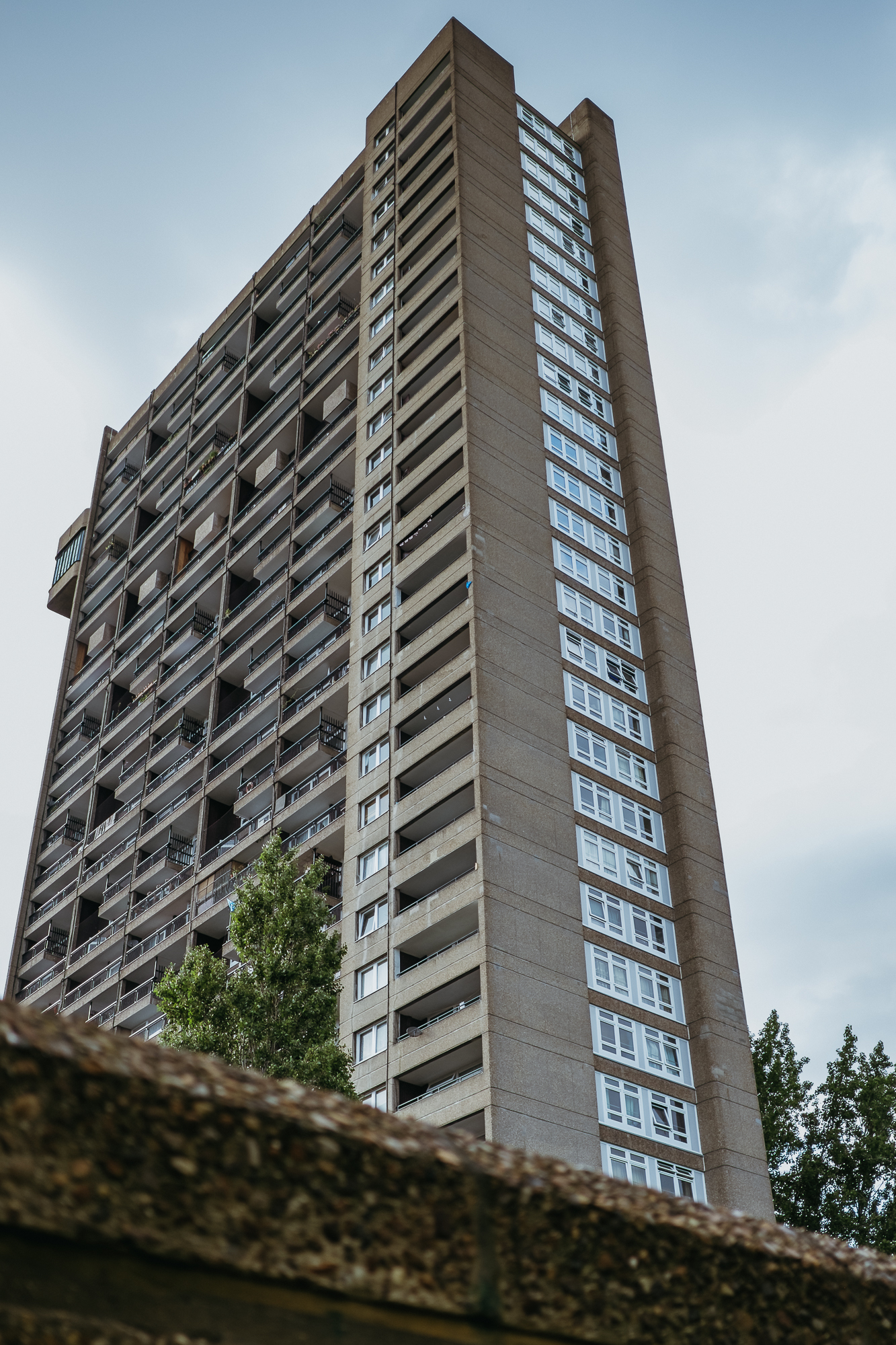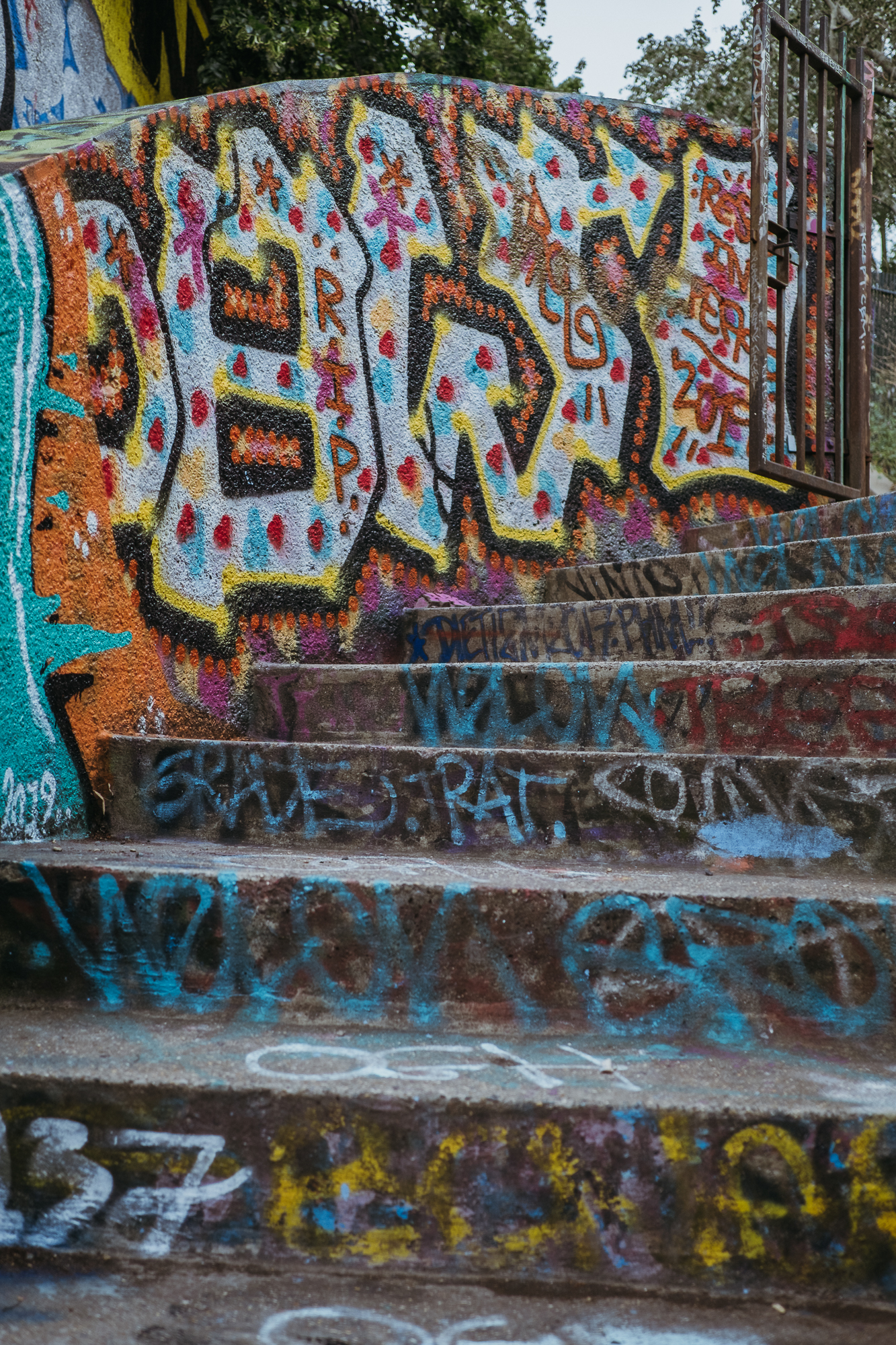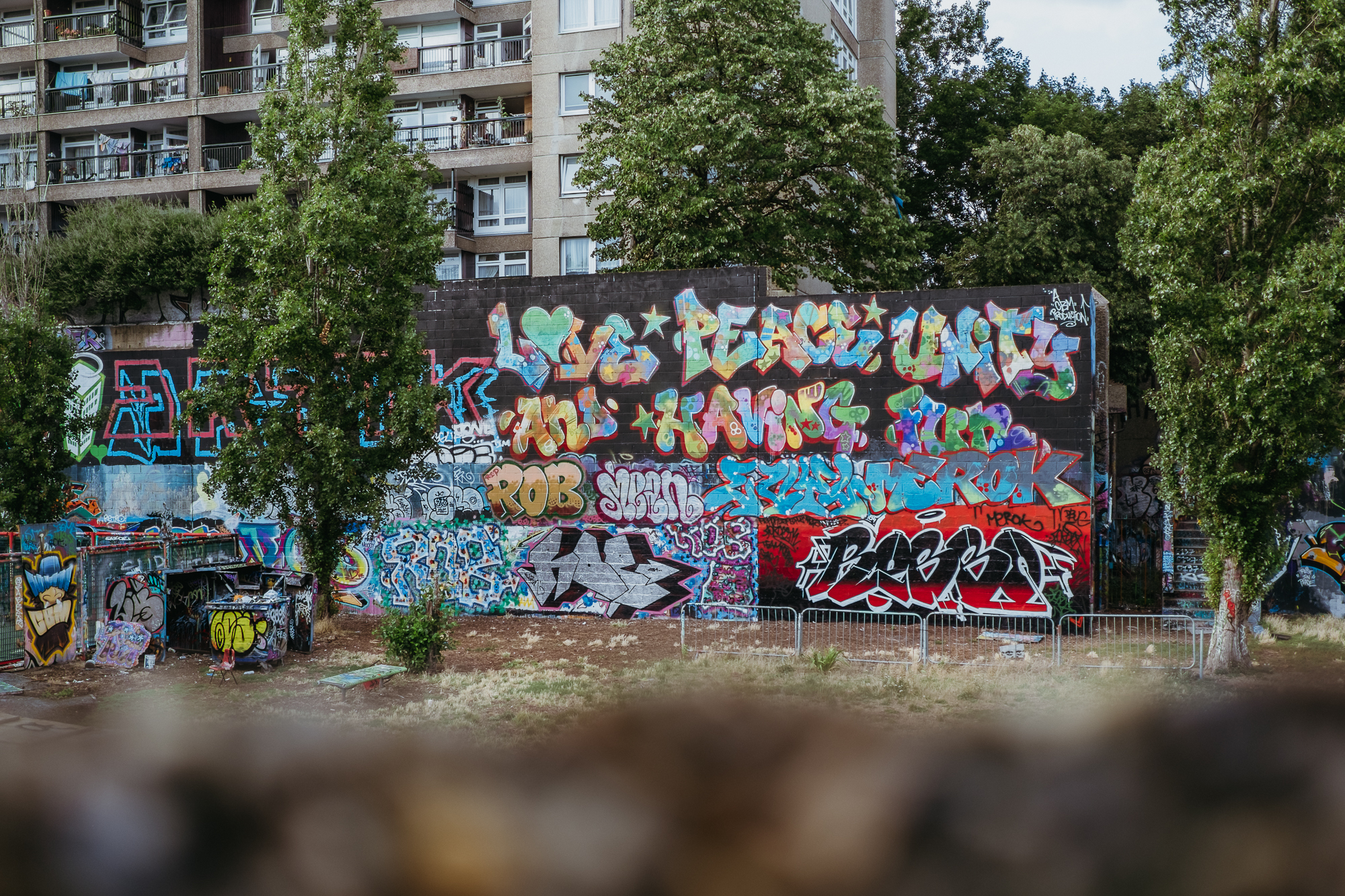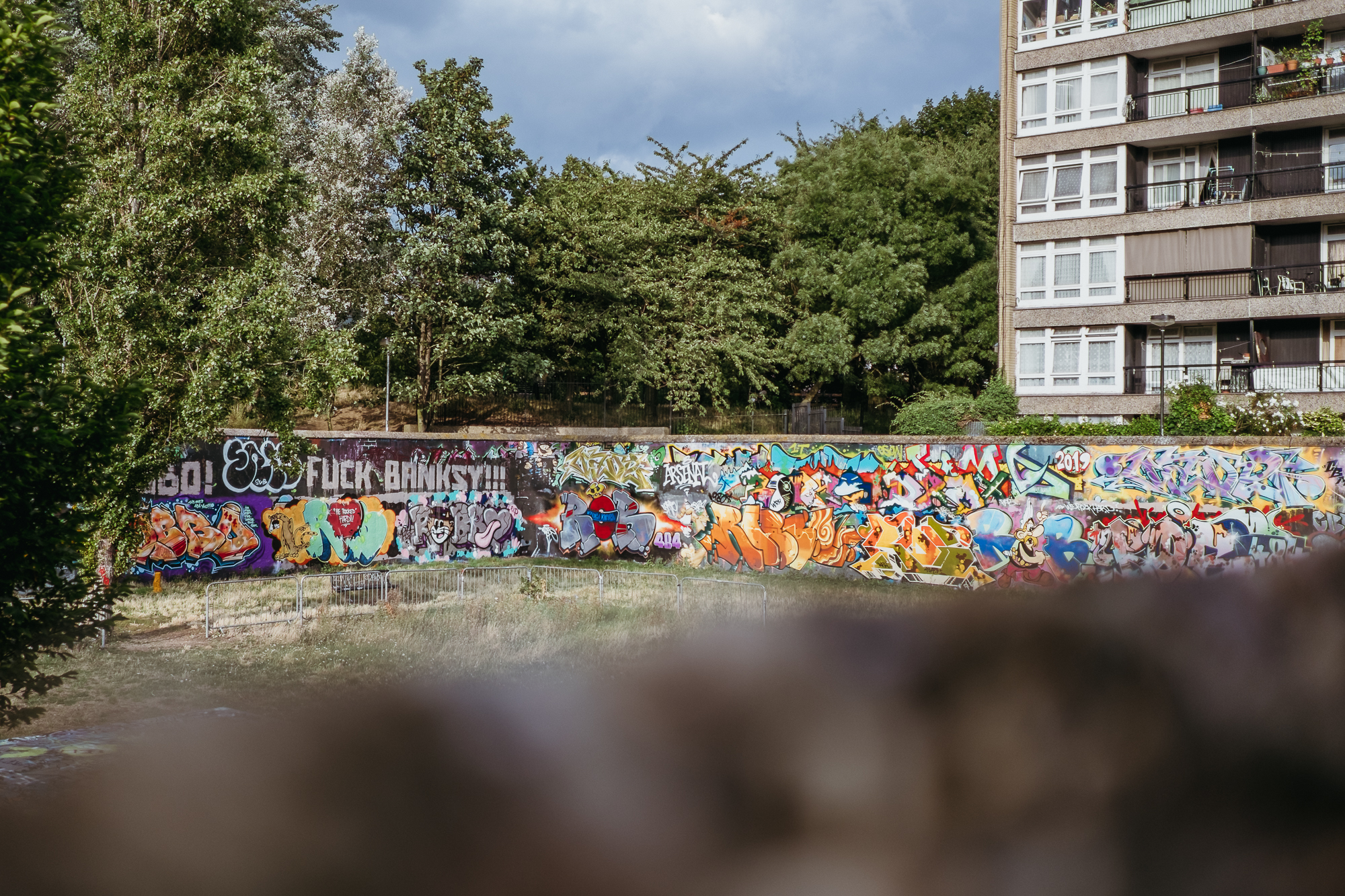AKIT
︎
Graffiti Writer & Illustrator
London, UK
Graffiti Writer & Illustrator
London, UK

Meeting AKIT: A Short Field Trip to Trellick Beach
(that almost didn’t happen)
Funny story: I almost didn’t make it to meet Akit because of a train delay. When I finally reached the meeting place, she had texted to say she was leaving, and I totally panicked! Thankfully she graciously turned back around and brought me to a popular graffiti spot in West London. Trellick Tower was one of the tallest apartment blocks in Europe when it was built in 1968. Designed by architect Ernö Goldfinger, it has become one of the most iconic brutalist buildings in the UK.
“We call this place Trellick beach because it’s like a shitty beach.” Akit laughs. At our time of meeting, the place is filled with tributes to King Robbo, a veteran graffiti artist who tragically passed away in 2014. Robbo was most known for his feud with Banksy – something I only found out after chatting with Akit.




What strikes me the most about graffiti art is how little an average person knows about it. For many (myself included), we probably spot graffiti and think they mostly look the same. But for graffiti writers like Akit, “there are good tags and bad tags, most outsiders won’t know the difference at all - they just see a load of scribbles.” In fact, when I ask Akit about who she is writing for, her answer speaks for itself: “I write for myself and other graffiti writers. My purpose is to get my name seen by others. Even if it’s a very small section of society that will understand my tag/piece or what it represents.”
“Tags are like a secret code, almost.”
While walking around the courtyard, Akit and I talk about how she got into graffiti in the first place: “It was for a boy,” she says with a laugh. And what motivated her to continue with graffiti writing for over 20 years?
“I was addicted. It became an all-encompassing hobby, it was my life. I was consumed by graffiti for a long time but [even] that became exhausting. It’s difficult to maintain that extreme lifestyle for long.”
There’s also a communal element to graffiti that cannot be denied. When I ask Akit about what it meant to her, this is what she had to say: “Being in a graffiti crew is amazing, like any gang of like-minded individuals especially those going against society’s norms, to have that rebellious thing is common is very exciting. Being with other graffiti writers is amazing. Knowing you have that weird thing in common with just a few other people always felt rather special.” It’s like finding your tribe of people who understands you.
“I was addicted. It became an all-encompassing hobby, it was my life. I was consumed by graffiti for a long time but [even] that became exhausting. It’s difficult to maintain that extreme lifestyle for long.”
There’s also a communal element to graffiti that cannot be denied. When I ask Akit about what it meant to her, this is what she had to say: “Being in a graffiti crew is amazing, like any gang of like-minded individuals especially those going against society’s norms, to have that rebellious thing is common is very exciting. Being with other graffiti writers is amazing. Knowing you have that weird thing in common with just a few other people always felt rather special.” It’s like finding your tribe of people who understands you.

“When I started graffiti I knew a lot about it and I knew graffiti writers
but until the day I actually saw someone get a pen out
and actually tag a wall I didn’t appreciate its power;
it literally changed my life.
Maybe it’s an ego thing – taking ownership on a train/wall,
putting your mark there for all to see,
personally I found it incredibly empowering.”



Since our time together was so short, Akit graciously answered some of my questions via email.
Here are some of my questions and her answers:
Q: Would you consider what you do art?
A: It’s become an art-form in its own right but I never set out thinking I’m doing something creative here. It was vandalism pure and simple. To a certain degree yes it is art, but you don’t need any artistic ability to be able to do it. People like to label things, but it’s always just graffiti to me. But I don’t like to call myself a graffiti artist so much, I prefer graffiti writer. The context in which it is done makes it different to most art, like I say we are not setting out to be creative; we are aiming to make our mark and get seen, the bigger, better and bolder it is the more the aim is achieved.
Q: I remember you saying that you tagged a train while on holiday in Croatia, this might be a silly question, but do you have any other “bucket list” places/things you’d want to see your graffiti on?
A: Just to paint trains anywhere is the ultimate graffiti goal.
Here are some of my questions and her answers:
Q: Would you consider what you do art?
A: It’s become an art-form in its own right but I never set out thinking I’m doing something creative here. It was vandalism pure and simple. To a certain degree yes it is art, but you don’t need any artistic ability to be able to do it. People like to label things, but it’s always just graffiti to me. But I don’t like to call myself a graffiti artist so much, I prefer graffiti writer. The context in which it is done makes it different to most art, like I say we are not setting out to be creative; we are aiming to make our mark and get seen, the bigger, better and bolder it is the more the aim is achieved.
Q: I remember you saying that you tagged a train while on holiday in Croatia, this might be a silly question, but do you have any other “bucket list” places/things you’d want to see your graffiti on?
A: Just to paint trains anywhere is the ultimate graffiti goal.
Q: Do you worry about getting caught? And have there been any close calls?
A: There have been a few close calls – to quote from a previous interview - There were times when I literally had a dripping wet tag behind me and [the authorities] never suspected me. A train driver pulled up once when I was doing graffiti in an alcove on the train tracks and I told him I was homeless, I was standing right in front of my graffiti!… [Instead] he took pity on me and offered me shelter. I don’t know how he believed me, I was looking really good; fully made up and smoking a fag. It didn’t even occur to him that I was a vandal.
Another time a group of us got stopped by the police after we had been bombing train tracks in the middle of the night and I think cos there was a girl with the group that diffused the situation (this happened often). We said we were going to a party or something. This time I had my hand in my pocket because it was totally covered in chrome paint and I remember thinking – ‘do not take your hand out of your pocket!!’ Haha!
Big thanks to Akit for meeting up with me and for answering my questions via email.
If you’re interested in Robbo’s feud with Banksy, here’s a link to a video about it.
A: There have been a few close calls – to quote from a previous interview - There were times when I literally had a dripping wet tag behind me and [the authorities] never suspected me. A train driver pulled up once when I was doing graffiti in an alcove on the train tracks and I told him I was homeless, I was standing right in front of my graffiti!… [Instead] he took pity on me and offered me shelter. I don’t know how he believed me, I was looking really good; fully made up and smoking a fag. It didn’t even occur to him that I was a vandal.
Another time a group of us got stopped by the police after we had been bombing train tracks in the middle of the night and I think cos there was a girl with the group that diffused the situation (this happened often). We said we were going to a party or something. This time I had my hand in my pocket because it was totally covered in chrome paint and I remember thinking – ‘do not take your hand out of your pocket!!’ Haha!
Big thanks to Akit for meeting up with me and for answering my questions via email.
If you’re interested in Robbo’s feud with Banksy, here’s a link to a video about it.



